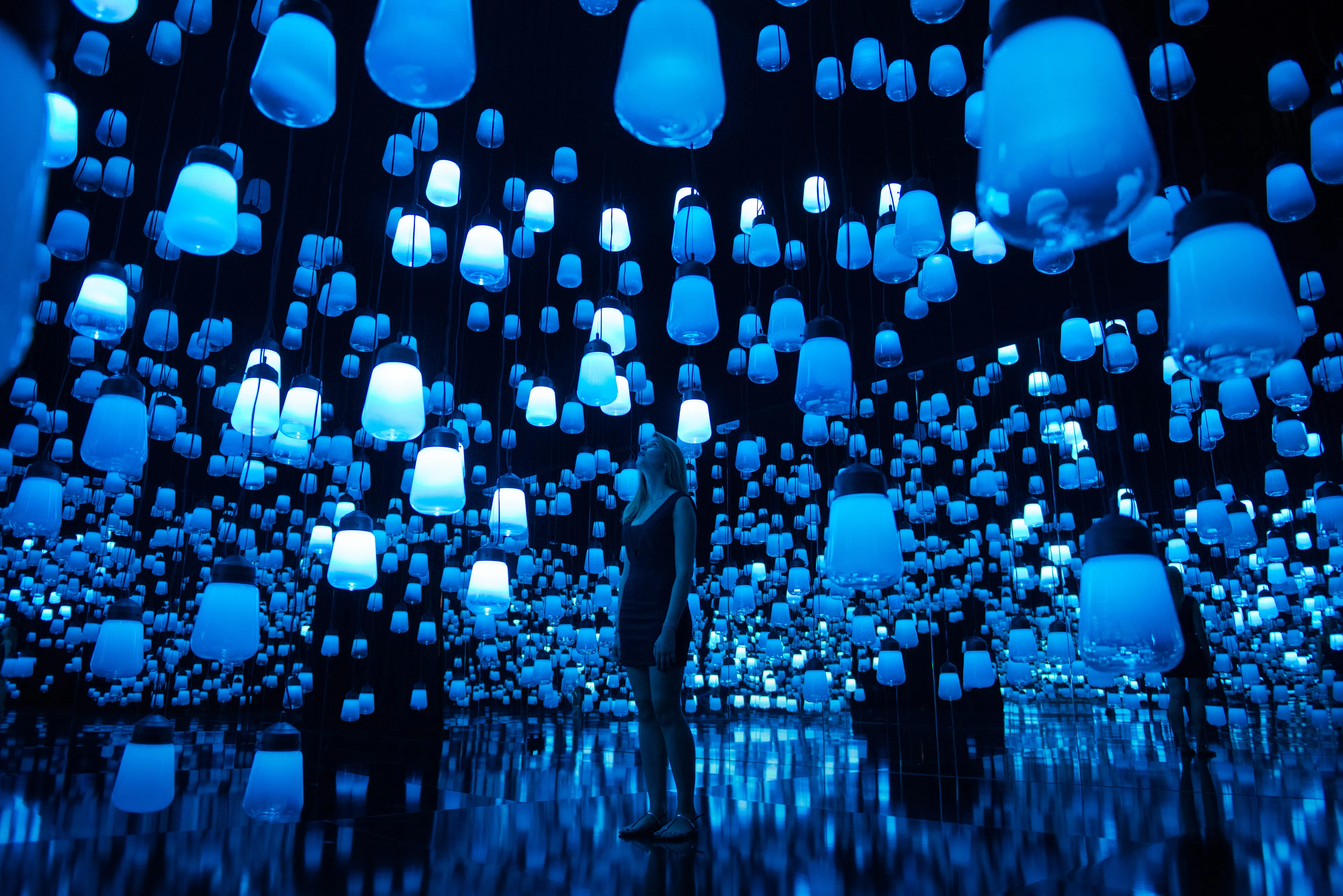Forest of Resonating Lamps: One Stroke - Ice


Forest of Resonating Lamps: One Stroke - Ice
This is an artwork about the continuity of light, which is generated as people move around freely and interact with the lamps.
When a person stands still, the lamp closest to them shines brightly, and its light continues on to the next nearest lamp. It also intersects with light born from other people.
The seemingly random arrangement of lamps in the space is mathematically derived such that, starting from any lamp, a line continuously drawn to the nearest lamp results in a single, connected path of light that passes through every lamp exactly once, like a unicursal stroke.
The light from a lamp that responds to a person always connects to its nearest neighbor, passing through every lamp once as the light propagates to all lamps in the space.
This is a work that explores the beauty of continuity itself, found in the continuous light that is born from the presence of people.
